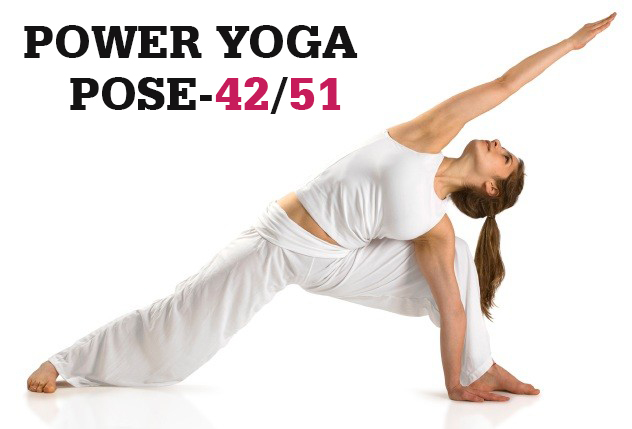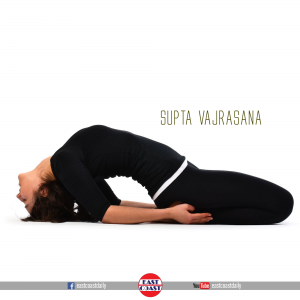
Power Yoga is a wellness-based vinyasa hone. Being a branch of Ashtanga Yoga, it has a large number of similar characteristics and advantages, including building inside warmth, expanded stamina, quality, and adaptability, and stress decrease. Supine Thunderbolt Poses is the forty-second Power Yoga Pose.

Supta Vajrasana – Supine Thunderbolt Pose
Supta Vajrasana or the ‘Supine Thunderbolt Pose’ is a variation of Vajrasana or the thunderbolt pose. The starting position for supta vajrasana is same as Vajrayana, but the ultimate position looks very different.
How to do Supta Vajrasana ?
- Sit in Vajrasana, the thunderbolt pose also called the kneeling pose.
- Knees are kept close together, legs bent and buttocks resting on the lower legs and heels.
- Toes were crossed and touching each other.
- After taking Vajrasana position, slowly bend backward, use arms and elbows to support your body weight, until the back of the head touches the ground.
- Now arch the back and rest the hands (palms) on the thighs. The elbows will continue to rest on the ground to support the weight of chest and abdomen.
- Breathe normally and deeply in a rhythmic manner.
- Close the eyes and relax all the muscles of the body.
- Remain in this position, as long as it is comfortable.
- Stressing of stiff thigh muscles can cause pain in initial stages of this asana. With practice, as the thigh muscles become more flexible and the pain will go away.
- This asana stretches the entire spine and puts pressure on the neck and sacral regions. Those suffering from sacral pain and other spinal defects should seek expert advice before attempting this asana.
Benefits
- Stretches the abdominal and thoracic muscles.
- It relieves constipation.
- Strengthens the thigh muscles.
- Strengthen the sacral region and brings flexibility to the back, but those suffering from sacral pain should avoid this asana.
- Brings flexibility of the spine.
- Good counter-pose for forwarding bending asanas.

Post Your Comments